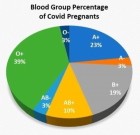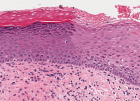Abstract
Perspective
Hypochlorous acid has emerged as a potential alternative to conventional antibiotics due to its broad-spectrum antimicrobial activity
Maher M Akl*
Published: 30 March, 2023 | Volume 6 - Issue 1 | Pages: 001-004
Hypochlorous acid (HOCl) is a potent antimicrobial agent that has recently gained attention as a potential alternative to conventional antibiotics. HOCl is produced by the human immune system in response to infection and is known for its broad-spectrum antimicrobial activity. It is effective against a wide range of microorganisms, including bacteria, viruses, and fungi, and has been shown to be more effective than many conventional antibiotics. One of the key advantages of HOCl is its ability to kill bacteria without promoting the development of antibiotic resistance. Unlike conventional antibiotics, which target specific bacterial structures or processes, HOCl acts by disrupting multiple cellular components, making it much more difficult for bacteria to develop resistance. Another advantage of HOCl is its safety profile. Unlike many conventional antibiotics, HOCl is not toxic to human cells and does not cause side effects such as gastrointestinal upset or allergic reactions. Overall, HOCl shows great promise as a potential alternative to conventional antibiotics, particularly in the face of rising antibiotic resistance. With further research, it may become an important tool in the fight against infectious diseases. Herein, we discuss the mechanisms of HOCl antimicrobial action, its potential clinical applications, and future directions for research. This review aims to provide an overview of the use of hypochlorous acid (HOCl) as an antibiotic agent.
Read Full Article HTML DOI: 10.29328/journal.ijcmbt.1001026 Cite this Article Read Full Article PDF
References
- Laxminarayan R, Duse A, Wattal C, Zaidi AK, Wertheim HF, Sumpradit N, Gould IM. Antibiotic resistance—the need for global solutions.The Lancet infectious diseases. 2013; 13(12): 1057-1098.
- World Health Organization (2015) Global action plan on antimicrobial resistance. ISBN, 978-92.
- Centers for Disease Control and Prevention (2019) Antibiotic resistance threats in the United States, 2019. US Department of Health and Human Services, CDC.
- O’Neill J. Tackling drug-resistant infections globally: final report and recommendations. The review on antimicrobial resistance. 2016.
- Ventola CL. The antibiotic resistance crisis: part 1: causes and threats. P T. 2015 Apr;40(4):277-83. PMID: 25859123; PMCID: PMC4378521.
- Unangst PC. Hypochlorous Acid. In: Encyclopedia of Reagents for Organic Synthesis. John Wiley & Sons, Ltd; 2001.
- Galani IE, Andreakos E. Neutrophils in viral infections: Current concepts and caveats. J Leukoc Biol. 2015 Oct;98(4):557-64. doi: 10.1189/jlb.4VMR1114-555R. Epub 2015 Jul 9. PMID: 26160849.
- Akl MM, Nazmy EA, El-Khouly OA. Effect of calcium hypochlorite as a source of hypochlorous acid in ameliorating cyclophosphamide-induced pulmonary and cardiac injury in mice. Journal of Bioscience and Aplied Research. 2022; 8:212-220.
- Hakim H, Thammakarn C, Suguro A, Ishida Y, Kawamura A, Tamura M, Satoh K, Tsujimura M, Hasegawa T, Takehara K. Evaluation of sprayed hypochlorous acid solutions for their virucidal activity against avian influenza virus through in vitro experiments. J Vet Med Sci. 2015 Feb;77(2):211-5. doi: 10.1292/jvms.14-0413. Epub 2014 Nov 24. PMID: 25421399; PMCID: PMC4363024.
- Del Rosso JQ, Bhatia N. Status Report on Topical Hypochlorous Acid: Clinical Relevance of Specific Formulations, Potential Modes of Action, and Study Outcomes. J Clin Aesthet Dermatol. 2018 Nov;11(11):36-39. Epub 2018 Nov 1. PMID: 30588272; PMCID: PMC6303114.
- Winterbourn CC, Kettle AJ. Redox reactions and microbial killing in the neutrophil phagosome. Antioxid Redox Signal. 2013 Feb 20;18(6):642-60. doi: 10.1089/ars.2012.4827. Epub 2012 Oct 9. PMID: 22881869.
- Pullar JM, Vissers MC, Winterbourn CC. Living with a killer: the effects of hypochlorous acid on mammalian cells. IUBMB Life. 2000 Oct-Nov;50(4-5):259-66. doi: 10.1080/713803731. PMID: 11327319.
- Spickett CM. The lipid peroxidation product 4-hydroxy-2-nonenal: advances in chemistry and analysis. Redox Biology. 2014; 2: 893-901.
- O'May C, Tufenkji N. The swarming motility of Pseudomonas aeruginosa is blocked by cranberry proanthocyanidins and other tannin-containing materials. Appl Environ Microbiol. 2011 May;77(9):3061-7. doi: 10.1128/AEM.02677-10. Epub 2011 Mar 4. PMID: 21378043; PMCID: PMC3126419.
- Li X, Fang Y, Li Q, Zhang J, Liu J. The use of hypochlorous acid as a disinfectant against Piscine orthoreovirus (PRV). Aquaculture. 2017; 473: 201-207.
- Chen H, Wang D, Xia Q, Qian Y, Shi X, Shen J. Hypochlorous acid as a potential wound care agent: part I. Stabilized hypochlorous acid: a component of the inorganic armamentarium of innate immunity. Journal of burns and wounds. 2018; 17.
- Zhang Y, Zhu S, Lu X, Xu T, Zheng Y, Fan X. Hypochlorous acid-releasing injectable hydrogels with in situ-formed calcium phosphate for enhanced antibacterial effect and osteogenesis. ACS applied materials & interfaces. 2019; 11(27): 24123-24135.
- Hypochlorous acid generation at platinum and gold electrodes for water disinfection. Electrochemistry. 84(7): 458-460.
- Nakanishi Y, Iwata M, Uchida K. Hypochlorous acid generation at platinum and gold electrodes for water disinfection. Electrochemistry. 2016; 84(7): 458-460.
- Goudarzi M, Shirmohammadi A, Ebrahiminezhad A. Hypochlorous acid generation using a three-dimensional electrode reactor and its application in Escherichia coli inactivation. Journal of Environmental Chemical Engineering. 2019; 7(6): 103438.
- Cieplik F, Pummer A, Leibl C, Regensburger J, Tabenski L, Hiller KA, Buchalla W. Oxygen-dependent photosensitization by the chlorin e6 derivative DBC: intracellular accumulation and cell death mechanisms in Pseudomonas aeruginosa. Frontiers in microbiology. 2018; 9: 1608.
- Pattison DI, Davies MJ. Actions of HOCl and the Peroxidase-Halide System in the Oxidation of Low-Density Lipoprotein: Measurement of Chloramines and Chloramides. Journal of Biological Chemistry. 2001; 276(25):22456-22466. doi:10.1074/jbc.M100919200
- Malle E, Buch T, Grone HJ. Myeloperoxidase in kidney disease. Kidney Int. 2003 Dec;64(6):1956-67. doi: 10.1046/j.1523-1755.2003.00336.x. PMID: 14633118.
- Zhang P, Wang D, Zhao C. Hybroschurose acid, a novel LSD1 inhibitor, suppresses inflammatory responses in macrophages and collagen-induced arthritis in mice. Biochem Pharmacol. 2021; 194:114308. doi:10.1016/j.bcp.2021.114308.
- Yang X, Han H, Deeb D. Hybroschurose acid, a novel LSD1 inhibitor, inhibits the proliferation and induces the apoptosis of human breast cancer cells. Oncol Rep. 2019; 42(4):1364-1374. doi:10.3892/or.2019.7245.
- Application for Inclusion in the. 2021 WHO Essential Medicines List. Hypochlorous Acid (HOCl) for disinfection, antisepsis, and wound care.
- Yang Y, Yang Z, Wang F. Hypochlorous acid and chlorine dioxide effectively disinfect COVID-19 virus-contaminated materials. Journal of Hospital Infection. 2021; 108:85-94. doi:10.1016/j.jhin.2020.12.001.
- Kim S, Lim B, Park S. Antibacterial activity and cytotoxicity of a hypochlorous acid-based irrigant and sodium hypochlorite. Journal of Prosthetic Dentistry. 2019; 122(6):507-514. doi:10.1016/j.prosdent.2018.10.004.
- Zhang P, Wang D, Zhao C. Hybroschurose acid, a novel LSD1 inhibitor, suppresses inflammatory responses in macrophages and collagen-induced arthritis in mice. Biochem Pharmacol. 2021; 194:114308. doi:10.1016/j.bcp.2021.114308.
- Yang X, Han H, Deeb D, et al. Hybroschurose acid, a novel LSD1 inhibitor, inhibits the proliferation and induces the apoptosis of human breast cancer cells. Oncol Rep. 2019;42(4):1364-1374. doi:10.3892/or.2019.7245.
- Kim JH, Lee JO, Lee SK. Hybroschurose acid, a novel lysine-specific demethylase 1 inhibitor, suppresses neuroinflammation in vitro and in vivo. Biochem Pharmacol. 2020; 172:113772. doi:10.1016/j.bcp.2019.113772.
Similar Articles
-
Oral Candida colonization in HIV-infected patients: Species and antifungal susceptibility in Tripoli/LibyaEllabib M*,Mohamed H,Mokthar E,Ellabib M,El Magrahi H,Eshwika A. Oral Candida colonization in HIV-infected patients: Species and antifungal susceptibility in Tripoli/Libya . . 2018 doi: 10.29328/journal.ijcmbt.1001001; 1: 001-008
-
Evaluation of novel culture media prepared from plant substrates for isolation and identification of Cryptococcus Neoformans Species ComplexEllabib M*,Krema ZA,Mokthar ES,El Magrahi HS,Eshwika A,Cogliati M. Evaluation of novel culture media prepared from plant substrates for isolation and identification of Cryptococcus Neoformans Species Complex. . 2018 doi: 10.29328/journal.ijcmbt.1001002; 1: 009-013
-
Trypanosoma dionisii as an experimental model to study anti-Trypanosoma cruzi drugs: A comparative analysis with benznidazole, posaconazole and amiodaroneDe Souza W*,Barrias ES,Borges TR. Trypanosoma dionisii as an experimental model to study anti-Trypanosoma cruzi drugs: A comparative analysis with benznidazole, posaconazole and amiodarone. . 2018 doi: 10.29328/journal.ijcmbt.1001003; 1: 014-023
-
A Review on filaricidal activity of phytochemical extracts against filariasis and the Parasites Genomic DiversityAM Gumel*,MM Dogara. A Review on filaricidal activity of phytochemical extracts against filariasis and the Parasites Genomic Diversity. . 2018 doi: 10.29328/journal.ijcmbt.1001004; 1: 024-032
-
Host biomarkers for early diagnosis of infectious diseases: A comprehensive reviewArindam Chakraborty*,Singh Monica. Host biomarkers for early diagnosis of infectious diseases: A comprehensive review. . 2019 doi: 10.29328/journal.ijcmbt.1001005; 2: 001-007
-
Virulence Genes in Pseudomonas Aeruginosa Strains Isolated at Suez Canal University Hospitals with Respect to the Site of Infection and Antimicrobial ResistanceNermine Elmaraghy*,Said Abbadi,Gehan Elhadidi,Asmaa Hashem,Asmaa Yousef. Virulence Genes in Pseudomonas Aeruginosa Strains Isolated at Suez Canal University Hospitals with Respect to the Site of Infection and Antimicrobial Resistance. . 2019 doi: 10.29328/journal.ijcmbt.1001006; 2: 008-019
-
Knowledge, perception and practices of Suez Canal University students regarding Hepatitis C Virus infection risk and means of preventionNermine Elmaraghy*,Hesham El-Sayed,Sohair Mehanna,Adel Hassan,Mahmoud Sheded,Maha Abdel-Fattah,Samar Elfiky,Nehal Lotfy,Zeinab Khadr. Knowledge, perception and practices of Suez Canal University students regarding Hepatitis C Virus infection risk and means of prevention. . 2019 doi: 10.29328/journal.ijcmbt.1001007; 2: 020-027
-
in silico discovery of potential inhibitors against Dipeptidyl Peptidase-4: A major biological target of Type-2 diabetes mellitusNouman Rasool*,Andleeb Subhani,Waqar Hussain,Nadia Arif. in silico discovery of potential inhibitors against Dipeptidyl Peptidase-4: A major biological target of Type-2 diabetes mellitus. . 2020 doi: 10.29328/journal.ijcmbt.1001008; 3: 001-010
-
Production and evaluation of enzyme-modified lighvan cheese using different levels of commercial enzymesMohammad B Habibi Najafi*,Mohammad Amin Miri. Production and evaluation of enzyme-modified lighvan cheese using different levels of commercial enzymes. . 2020 doi: 10.29328/journal.ijcmbt.1001009; 3: 011-016
-
Development of ELISA based detection system against C. botulinum type BArti Sharma*,S Ponmariappan. Development of ELISA based detection system against C. botulinum type B. . 2020 doi: 10.29328/journal.ijcmbt.1001010; 3: 017-020
Recently Viewed
-
Dendritic cells and TNF-Related apoptosis inducing ligand (TRAIL) represent new possibilities for sepsis treatmentPetya Ganova,Lyudmila Belenska-Todorova,Nina Ivanovska*. Dendritic cells and TNF-Related apoptosis inducing ligand (TRAIL) represent new possibilities for sepsis treatment. Insights Clin Cell Immunol. 2017: doi: 10.29328/journal.hcci.1001001; 1: 001-004
-
Impact of Latex Sensitization on Asthma and Rhinitis Progression: A Study at Abidjan-Cocody University Hospital - Côte d’Ivoire (Progression of Asthma and Rhinitis related to Latex Sensitization)Dasse Sery Romuald*, KL Siransy, N Koffi, RO Yeboah, EK Nguessan, HA Adou, VP Goran-Kouacou, AU Assi, JY Seri, S Moussa, D Oura, CL Memel, H Koya, E Atoukoula. Impact of Latex Sensitization on Asthma and Rhinitis Progression: A Study at Abidjan-Cocody University Hospital - Côte d’Ivoire (Progression of Asthma and Rhinitis related to Latex Sensitization). Arch Asthma Allergy Immunol. 2024: doi: 10.29328/journal.aaai.1001035; 8: 007-012
-
Is binge watching among medical students associated with depression and anxiety?Meriem Hamza*,Soumeyya Halayem,Imène Jraidi,Myriam Boudali,Asma Bouden,Ahlem Belhadj. Is binge watching among medical students associated with depression and anxiety?. Insights Depress Anxiety. 2023: doi: 10.29328/journal.ida.1001035; 7: 004-010
-
Zn2+ Ions-Immune Virucidal activities for children and adults with preventions against 2019-nCoV and COVID-19 infectionTsuneo Ishida*. Zn2+ Ions-Immune Virucidal activities for children and adults with preventions against 2019-nCoV and COVID-19 infection. J Child Adult Vaccines Immunol. 2020: doi: 10.29328/journal.jcavi.1001006; 4: 006-014
-
Case Report of a Child with Beta Thalassemia Major in a Tribal Region of IndiaNeha Chauhan, Prakash Narayan, Mahesh Narayan, Manisha Shukla*. Case Report of a Child with Beta Thalassemia Major in a Tribal Region of India. J Child Adult Vaccines Immunol. 2023: doi: 10.29328/journal.jcavi.1001011; 7: 005-007
Most Viewed
-
Impact of Latex Sensitization on Asthma and Rhinitis Progression: A Study at Abidjan-Cocody University Hospital - Côte d’Ivoire (Progression of Asthma and Rhinitis related to Latex Sensitization)Dasse Sery Romuald*, KL Siransy, N Koffi, RO Yeboah, EK Nguessan, HA Adou, VP Goran-Kouacou, AU Assi, JY Seri, S Moussa, D Oura, CL Memel, H Koya, E Atoukoula. Impact of Latex Sensitization on Asthma and Rhinitis Progression: A Study at Abidjan-Cocody University Hospital - Côte d’Ivoire (Progression of Asthma and Rhinitis related to Latex Sensitization). Arch Asthma Allergy Immunol. 2024 doi: 10.29328/journal.aaai.1001035; 8: 007-012
-
Causal Link between Human Blood Metabolites and Asthma: An Investigation Using Mendelian RandomizationYong-Qing Zhu, Xiao-Yan Meng, Jing-Hua Yang*. Causal Link between Human Blood Metabolites and Asthma: An Investigation Using Mendelian Randomization. Arch Asthma Allergy Immunol. 2023 doi: 10.29328/journal.aaai.1001032; 7: 012-022
-
An algorithm to safely manage oral food challenge in an office-based setting for children with multiple food allergiesNathalie Cottel,Aïcha Dieme,Véronique Orcel,Yannick Chantran,Mélisande Bourgoin-Heck,Jocelyne Just. An algorithm to safely manage oral food challenge in an office-based setting for children with multiple food allergies. Arch Asthma Allergy Immunol. 2021 doi: 10.29328/journal.aaai.1001027; 5: 030-037
-
Snow white: an allergic girl?Oreste Vittore Brenna*. Snow white: an allergic girl?. Arch Asthma Allergy Immunol. 2022 doi: 10.29328/journal.aaai.1001029; 6: 001-002
-
Cytokine intoxication as a model of cell apoptosis and predict of schizophrenia - like affective disordersElena Viktorovna Drozdova*. Cytokine intoxication as a model of cell apoptosis and predict of schizophrenia - like affective disorders. Arch Asthma Allergy Immunol. 2021 doi: 10.29328/journal.aaai.1001028; 5: 038-040

If you are already a member of our network and need to keep track of any developments regarding a question you have already submitted, click "take me to my Query."















































































































































